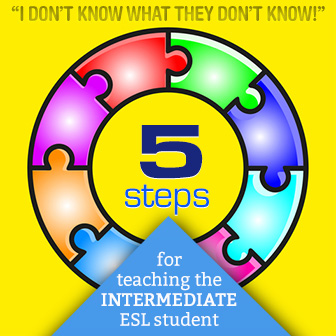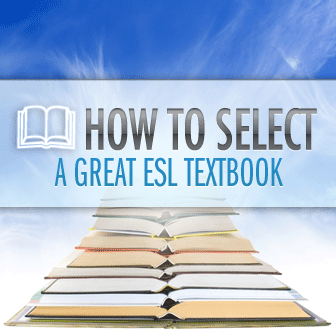I Donít Know What They Donít Know: 5 Steps for Teaching the Intermediate ESL Student


However, through experience, I no longer view it this way: what book a teacher uses—or doesn’t use—reveals a lot about her teaching style and curriculum.
For example, a teacher who uses Azar’s grammar series, with its clear charts and explanations of grammar points, probably takes a rather traditional, structured approach to grammar. The teacher’s colleague who uses Molinsky and Bliss’s “Side by Side” series probably takes an audiolingual approach to language instruction, with a focus on oral language and repetition of patterned drills. If I’m not familiar with the textbook the teacher names, I can find out about from him, perhaps look over a copy if he has one, and I might decide to try it next semester for my own class. Traditionally, in fact, before the electronic revolution, the textbook was considered the cornerstone of a class, much of the curriculum and instruction based on it.
So how do you go about choosing an excellent textbook for your class? There is a process that will ensure picking out a strong, if not ideal, textbook.
Find out as much as possible before your class meets about your students. How old are they? What level of English speakers? What motivation do they have for learning English: academic, vocational, social? Do they live in or outside an English-speaking country? Are they long-term residents or newly arrived? Answers to these questions will provide you with information needed to choose materials: you wouldn’t want a text based on conversational American English, for example, for a population living outside the U.S. and wanting to study English primarily for succeeding in a British university.
It is through these channels that you will get the most up-to-date news on what’s available. You can also sign up to receive print or electronic updates on their merchandise. Some major publishers for ESL are Pearson Longman, Heinle and Heinle, Cambridge University Press, Prentice Hall Regents, and Oxford University Press. They all maintain extensive websites on which you can view material; many still offer a traditional paper catalogues as well. In addition, many publishers have sales representatives who cover certain areas, like northern California, who once you have contacted the publisher once, will check in with you regarding materials needs for the next term.
Now that you know something about your students, and you know some of the publishers, you can begin checking out some of the materials. Most publishers divide their materials by level and skill. For example, say I’ve just been assigned a class of advanced level reading for the fall. In looking at Cambridge University’s online catalog, I first selected “ESL,” then “teachers,” then “English for Academic Purposes,” for students studying for the purpose of entering college. I then scrolled down the resources that came up—many writing texts but only one reading, Making Connections, which has three levels of readers at the intermediate level, low intermediate, intermediate, and high intermediate, and is based on academic text, for the purpose of academic preparation. This text looks very promising even though my students are called “advanced”—“advanced” is relative, depending on the program—and the books are intermediate. I’m going to look up the name of my Cambridge representative and see about an exam copy. Some sites also allow you to view chapters of the book.
Once I have either the book itself in front of me or pages for view on my computer screen, what should I look for? There are several features you should consider in making the final selection.
Is there too much dense print for students to comfortably read? Or perhaps, as is often the case with textbooks at the secondary level these days in the U.S., are there too many pictures and graphs and print to really process effectively? There should be a comfortable balance between print and nonprint material: what that is varies teacher to teacher and class to class. For a reading class, for example, I wouldn’t want tons of dense print but also no more than one image or graph per page.
How will it fit into your overall class? An ESL textbook is not just for reading, of course. Even with my reading text, I’d want prereading and postreading questions, to help students process and understand the material, and I’d want there to be discussion points at the end because interaction between peers is especially important in an ESL class, and I’d want essay-type questions related to the topic to practice writing skills.
Are there CDs or DVDs? Are they extraordinarily expensive? Is the textbook itself expensive? Too expensive for students? Weigh the value of the text against the cost. Make sure that you, your students, and the school are getting good value for the money.
Many ESL texts come in leveled series. For example, American English File and American Headways, both through Oxford University Press, are leveled series from beginning to high intermediate. If you like the text, and it is part of a series, this can be helpful to your ESL program, or your multi-level class, as students would have a uniform text and activities across levels.
Many ESL books, especially if the book is one of a series, have accompanying websites. Longman’s Side-by-Side, for example has podcasts, author interviews, and links to standards information. The website for the Azar grammar series has a blog for teachers. There are websites that are more student-focused, such as the one for Oxford University Press’s American English File, which has a student site with supplementary activities for practical English, pronunciation, vocabulary, and grammar games. This site is especially helpful for the student who finishes her work quickly and needs some extra activities to keep busy.
However, by knowing where to go and what questions to ask, the teacher can pick out the perfect text for her class to keep them engaged.